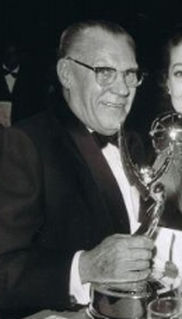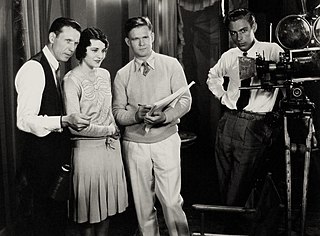Related Research Articles

George Brackett Seitz was an American playwright, screenwriter, film actor and director. He was known for his screenplays for action serials, such as The Perils of Pauline (1914) and The Exploits of Elaine (1914).

Walter Sydney Vinnicombe, known as Wally Patch, was an English actor and comedian. He worked in film, television and theatre.

George S. Barnes, A.S.C. was an American cinematographer active from the era of silent films to the early 1950s.

John Francis Seitz, A.S.C. was an American cinematographer and inventor.

Charles Brown Middleton was an American stage and film actor. During a film career that began at age 46 and lasted almost 30 years, he appeared in nearly 200 films as well as numerous plays. Sometimes credited as Charles B. Middleton, he is perhaps best remembered for his role as the villainous emperor Ming the Merciless in the three Flash Gordon serials made between 1936 and 1940.

Mutz Greenbaum, sometimes credited as Max Greene or Max Greenbaum, was a German-born film cinematographer.
Sidney Hickox, A.S.C. was an American film and television cinematographer.

Nobert Brodine, also credited as Norbert F. Brodin and Norbert Brodin, was a film cinematographer. The Saint Joseph, Missouri-born cameraman worked on over 100 films in his career before retiring from film making in 1953, at which time he worked exclusively in television until 1960.
Rudolph Maté was a Polish-Hungarian-American cinematographer, film director and film producer who worked as cameraman and cinematographer in Hungary, Austria, Germany, France and the United Kingdom, before moving to Hollywood in the mid 1930s.
Alfred Junge was a German-born production designer who spent a large part of his career working in the British film industry.

Paul Causey Hurst was an American actor and director.

Wade Boteler was an American film actor and writer. He appeared in more than 430 films between 1919 and 1943. He was born in Santa Ana, California, and died in Hollywood, California, from a heart attack.

Philip E. Rosen was an American film director and cinematographer. He directed 142 films between 1915 and 1949.
Peter Gawthorne was an Anglo-Irish actor, probably best known for his roles in the films of Will Hay and other popular British comedians of the 1930s and 1940s. Gawthorne was one of Britain's most called-upon supporting actors during this period.

Frank R. Strayer was an actor, film writer, director and producer. He was active from the mid-1920s until the early 1950s.
Cyril McLaglen (1899–1987) was a British actor who appeared in a variety of films between 1920 and 1951. He was born in London in 1899 and made his film debut in the 1920 film The Call of the Road. He was the younger brother of the actor Victor McLaglen.
Bruno Mondi was a German cameraman and director of photography.
Konstantin Irmen-Tschet was a Russian Empire-born German cinematographer. Irmen-Tschet was a leading technician of German films from the silent era to well into the post-Second World War years. He also often worked in Switzerland.
L. William O'Connell was an American cinematographer who worked in Hollywood for decades, beginning during the silent era. He frequently worked with directors Howard Hawks and William K. Howard.
George Robinson was an American cinematographer. At the beginning of his career he acted in several short films before switching to work behind the camera. He was employed by Vitagraph and later by Universal Pictures.
References
- ↑ Slide p.55
- ↑ "Collections Search | BFI | British Film Institute".